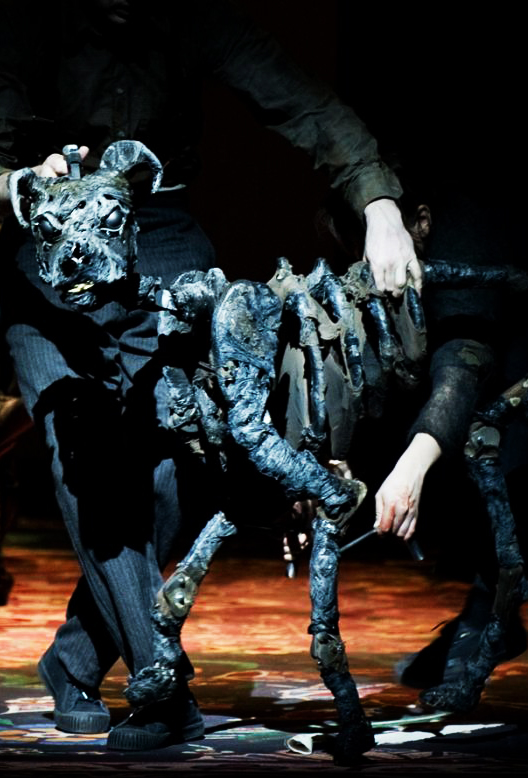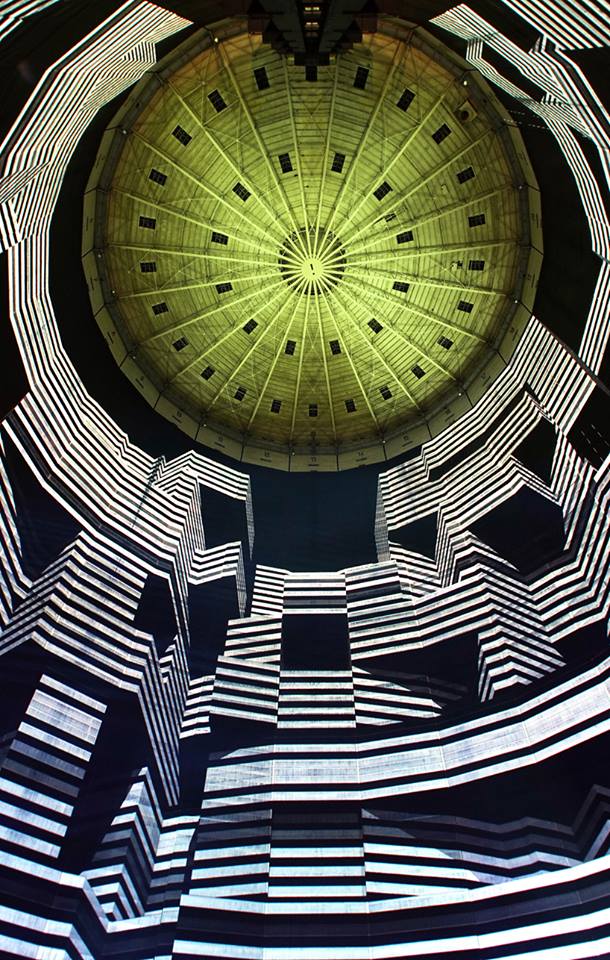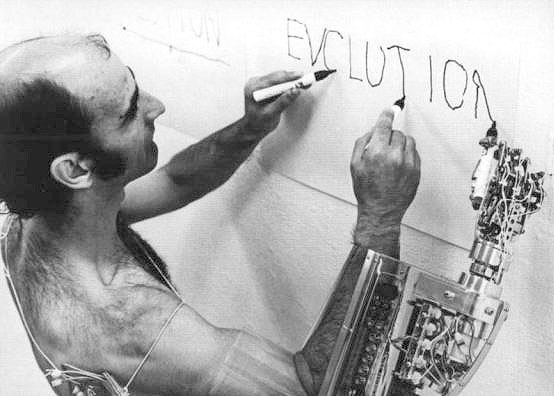
Alexander Raskatov
A Dog’s Heart
Dutch National Opera
Libretto by Cesare Mazzonis
based on a novella by Mikhail Bulgakov

A Dog’s Heart
Dutch National Opera
Libretto by Cesare Mazzonis
based on a novella by Mikhail Bulgakov

320 degree licht
L’installation «320° Lumière» du groupe artistique URBANSCREEN, implanté à Brême, utilise comme point de départ la beauté et le caractère de cathédrale du Gazomètre pour créer un jeu fascinant de volumes et de lumière. Des motifs graphiques se développent et se transforment dans un rayon de 320 degrés sur la paroi intérieure du Gazomètre d’une hauteur de 100 mètres. Le spectateur assiste alors à une alternance entre un espace réel et un espace virtuel, le Gazomètre semble se dissoudre dans ses propres structures filigranes pour finalement retrouver continuellement sa forme distincte. «320 ° Lumière» est réalisée à partir d’une technologie de projection Epson. L’installation couvrant une surface de 20 000 mètres carré fait partie des projections intérieures les plus grandes et en terme de technique les plus complexes.

Hearing Colors
Every colour has a different vibration, meaning different paintings, images or even faces have a different note or sound.
This audio input was once worn on the outside of his head, but now it has been implanted inside his skull – much like a cochlear implant – he has a greater depth of colour perception.
The new wi-fi and bluetooth connectors in the chip also means he will be the first person in the world to experience an image without actually seeing it for himself.

No filme Johnny Mnemonic, o diretor Robert Longo vai ao limite da ficção científica ao colocar um chip de prodigiosa memória no cérebro do personagem principal, representado por Keanu Reeves. O espectador fica com a nítida sensação de que num futuro próximo a informação estará disponível, transportada de um lugar a outro no cérebro de ciborgues mensageiros. O chip pode transportar uma quantidade quase infinita de dados plugando um pino no orifício de um implante eletrônico colocado bem na região occipital.
cinema full

drawing with robot arm
“With gene mapping, gender reassignment, prosthetic limbs and neural implants, what a body is and how a body operates becomes problematic. We generate Fractal Flesh and Phantom Flesh, extended operational systems and virtual task environments. Meat and metal mesh into unexpected and alternate anatomical architectures that perform remotely beyond the boundaries of the skin and beyond the local space it inhabits. The monstrous is no longer the alien other. We inhabit an age of Circulating Flesh. Organs are extracted from one body and inserted into other bodies. Limbs that are amputated from a dead body can be reattached and reanimated on a living body. A face from a donor stitched to the skull of the recipient becomes a Third Face. A skin cell from an impotent male can be recoded into a sperm cell. And more interestingly a skin cell from a female body might be recoded into a sperm cell. Turbine hearts circulate blood without pulsing. In the near future you might rest you head on your loved one’s chest. They are warm to the touch, they are breathing, they are certainly alive. But they will have no heartbeat. A cadaver can be preserved forever through plastination whilst simultaneously a comatose body can be sustained indefinitely on a life-support system. Dead bodies need not decompose, near-dead bodies need not die. Most people will no longer die biological deaths. They will die when their life-support systems are switched off. The dead, the near-dead, the not-yet-born and the partially living exist simultaneously. And cryongenically preserved bodies await reanimation at some imagined future. We live in an age of the Cadaver, the Comatose and the Chimera. Liminal spaces proliferate. Engineering organs, stem-cell growing them or by bio-printing will result in an abundence of organs. An excess of organs. Of organs awaiting bodies. Of Organs Without Bodies.” STELARC